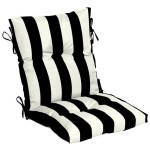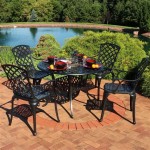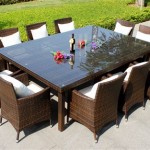```html
Enhancing Outdoor Spaces with Wall Mounted Water Fountains
Outdoor wall mounted water fountains offer a blend of aesthetic appeal and functional design, transforming patios, gardens, courtyards, and other exterior areas into serene and visually appealing environments. These fountains, unlike their freestanding counterparts, are affixed directly to a wall or other vertical surface, creating a focal point without consuming valuable ground space. This space-saving design makes them particularly suitable for smaller outdoor areas or locations where optimizing space is a priority.
The installation of a wall mounted water fountain can significantly enhance the ambiance of an outdoor space by introducing the soothing sounds of flowing water. This natural white noise can help to mask unwanted background noises, such as traffic or nearby construction, creating a more relaxing and tranquil atmosphere. Beyond the auditory benefits, the visual element of a well-designed water fountain can add a touch of elegance and sophistication to any outdoor setting.
The diverse range of styles, materials, and sizes available for outdoor wall mounted water fountains ensures that there is an option to complement virtually any architectural style or personal preference. From rustic stone designs to modern stainless steel creations, the options are vast. The selection process involves considering factors such as the overall aesthetic of the surrounding area, the available space, and the desired level of maintenance.
Key Point 1: Design and Material Variations
The aesthetic versatility of outdoor wall mounted water fountains is largely attributable to the wide array of designs and materials available. These variations allow homeowners and landscape designers to select a fountain that seamlessly integrates with the existing outdoor décor and architectural style. Material choices range from natural stone, such as travertine and slate, to manufactured materials like cast stone, resin, and metal, each offering distinct advantages in terms of durability, aesthetic appeal, and maintenance requirements.
Natural Stone Fountains: Stone fountains provide a timeless and organic look, often featuring textures and variations that add character and uniqueness. Travertine, for example, offers a classic, neutral tone, while slate provides a more rustic and textured appearance. These natural materials are generally durable and weather-resistant, but they may require periodic sealing to prevent staining or water damage. The inherent weight of stone fountains can also pose installation challenges, requiring sturdy wall support.
Cast Stone Fountains: Cast stone is a manufactured material that replicates the appearance of natural stone but offers greater design flexibility and often lower cost. It is typically made from a mixture of cement, aggregates, and pigments, allowing for a wide range of colors and textures. Cast stone fountains are generally more lightweight than their natural stone counterparts, simplifying installation. They are also relatively durable and weather-resistant, making them a practical choice for various climates.
Resin Fountains: Resin fountains are a lightweight and cost-effective option, particularly suitable for those seeking intricate designs or unique shapes. Resin materials can be molded into virtually any form, allowing for highly detailed sculptures and decorative elements. While resin is generally weather-resistant, it may be susceptible to fading or cracking in extreme temperatures or direct sunlight over prolonged periods. They also tend to appear less authentic than stone or metal options.
Metal Fountains: Metal fountains, often constructed from stainless steel, copper, or bronze, offer a modern and sleek aesthetic. Stainless steel is particularly popular due to its corrosion resistance and durability. Copper and bronze fountains, on the other hand, develop a natural patina over time, adding character and visual appeal. Metal fountains can be fabricated in a variety of shapes and sizes, from minimalist designs to more elaborate sculptural forms. They generally require minimal maintenance, but regular cleaning may be necessary to prevent tarnishing or corrosion, depending on the specific metal used.
Key Point 2: Installation Considerations
Proper installation is crucial for the longevity and performance of an outdoor wall mounted water fountain. The process involves careful planning, preparation, and adherence to specific guidelines to ensure that the fountain is securely mounted, properly plumbed, and electrically safe. The complexity of the installation can vary depending on the size, weight, and design of the fountain, as well as the type of wall it is being mounted on.
Wall Assessment: The first step in the installation process is to assess the structural integrity of the wall. The wall must be capable of supporting the weight of the fountain, especially when filled with water. For heavier fountains, it may be necessary to reinforce the wall with additional support beams or brackets. Different wall types, such as brick, concrete, or wood, may require different anchoring methods. Consulting with a structural engineer or experienced contractor is recommended for ensuring the wall can safely support the fountain.
Plumbing Connections: Most wall mounted water fountains require a plumbed water source to automatically refill the reservoir. This typically involves connecting the fountain to an existing water line using appropriate fittings and tubing. Alternatively, some fountains are designed to be manually filled, eliminating the need for plumbing connections. If plumbing is required, it is essential to ensure that the connections are leak-proof and properly insulated to prevent freezing in cold climates. A backflow preventer may also be necessary to protect the potable water supply from contamination.
Electrical Connections: Many water fountains incorporate pumps and lighting, requiring electrical connections. It is crucial to ensure that all electrical work is performed in accordance with local electrical codes and by a qualified electrician. Outdoor electrical outlets should be GFCI (Ground Fault Circuit Interrupter) protected to prevent electric shock. Wiring should be properly insulated and protected from the elements. Consider using low-voltage lighting for safety and energy efficiency.
Mounting Procedures: The method used to mount the fountain to the wall will depend on the fountain's design and weight. Heavy fountains typically require robust mounting brackets that are securely anchored to the wall using bolts or screws. Lighter fountains may be mounted using adhesive or smaller fasteners. It is essential to follow the manufacturer's instructions carefully to ensure that the fountain is mounted securely and level. Incorrect mounting can lead to instability, leaks, or even damage to the wall or fountain.
Key Point 3: Maintenance and Care
Regular maintenance is essential for preserving the aesthetic appeal and prolonging the lifespan of an outdoor wall mounted water fountain. The specific maintenance requirements will vary depending on the materials used in the fountain's construction, the local climate, and the water quality. However, some general maintenance practices apply to most fountains.
Cleaning: Periodic cleaning is necessary to remove algae, mineral deposits, and other debris that can accumulate on the fountain's surfaces. The frequency of cleaning will depend on the water quality and the amount of sunlight the fountain receives. A soft brush or sponge and a mild detergent can be used to clean the fountain. Avoid using harsh chemicals or abrasive cleaners, as these can damage the fountain's finish. For stubborn mineral deposits, a solution of vinegar and water can be effective.
Water Quality: Maintaining good water quality is crucial for preventing algae growth and mineral buildup. Regularly check the water level and add fresh water as needed. Consider using a fountain water treatment product to inhibit algae growth and prevent mineral deposits. In areas with hard water, a water softener may be necessary to reduce the mineral content of the water. Emptying and cleaning the fountain reservoir periodically can also help to maintain water quality.
Winterization: In colder climates, it is essential to winterize the fountain to prevent damage from freezing temperatures. This typically involves draining the fountain completely, disconnecting the pump, and covering the fountain with a protective tarp or cover. Pumps should be stored indoors in a frost-free location. Failure to winterize the fountain can lead to cracks, leaks, or other damage that can be costly to repair.
Pump Maintenance: The fountain pump requires periodic maintenance to ensure optimal performance. Check the pump regularly for debris or obstructions that may be blocking the intake. Clean the pump as needed, following the manufacturer's instructions. Replace the pump if it becomes noisy, weak, or stops working. Proper pump maintenance can significantly extend its lifespan.
By carefully considering these design, installation, and maintenance aspects, individuals can successfully integrate an outdoor wall mounted water fountain into their landscape, creating a captivating and tranquil outdoor haven.
```
Portico Wall Outdoor Water Fountain

Sunnydaze Seaside Outdoor Wall Fountain With Electric Pump 27 H Lead Walmart Com

Falling Water Ii Cast Stone Wall Fountain Modern Garden Soothing Company

Sunnydaze 27 H Electric Polystone Florence Outdoor Wall Mount Water Fountain Florentine Stone Finish

Sunnydaze Decor Seaside Outdoor Wall Water Fountain With Florentine Finish 132396003 At Tractor Supply Co

Sunnydaze Messina Outdoor Wall Fountain With Submersible Pump 26 H Florentine Stone Walmart Com

Sunnydaze 27 H Electric Polystone Seaside Outdoor Wall Mount Water Fountain Florentine Stone Finish Oriental Trading

Northwoods 46 High Relic Hi Tone Led Outdoor Wall Fountain 74w47 Lamps Plus

Alpine Corporation 32 In Tall Outdoor Classical Wall Mounted Water Fountain With Lion Head And Led Lights Tzl160 The Home

Sunnydaze Messina Outdoor Wall Fountain With Submersible Pump 26 H
See Also








